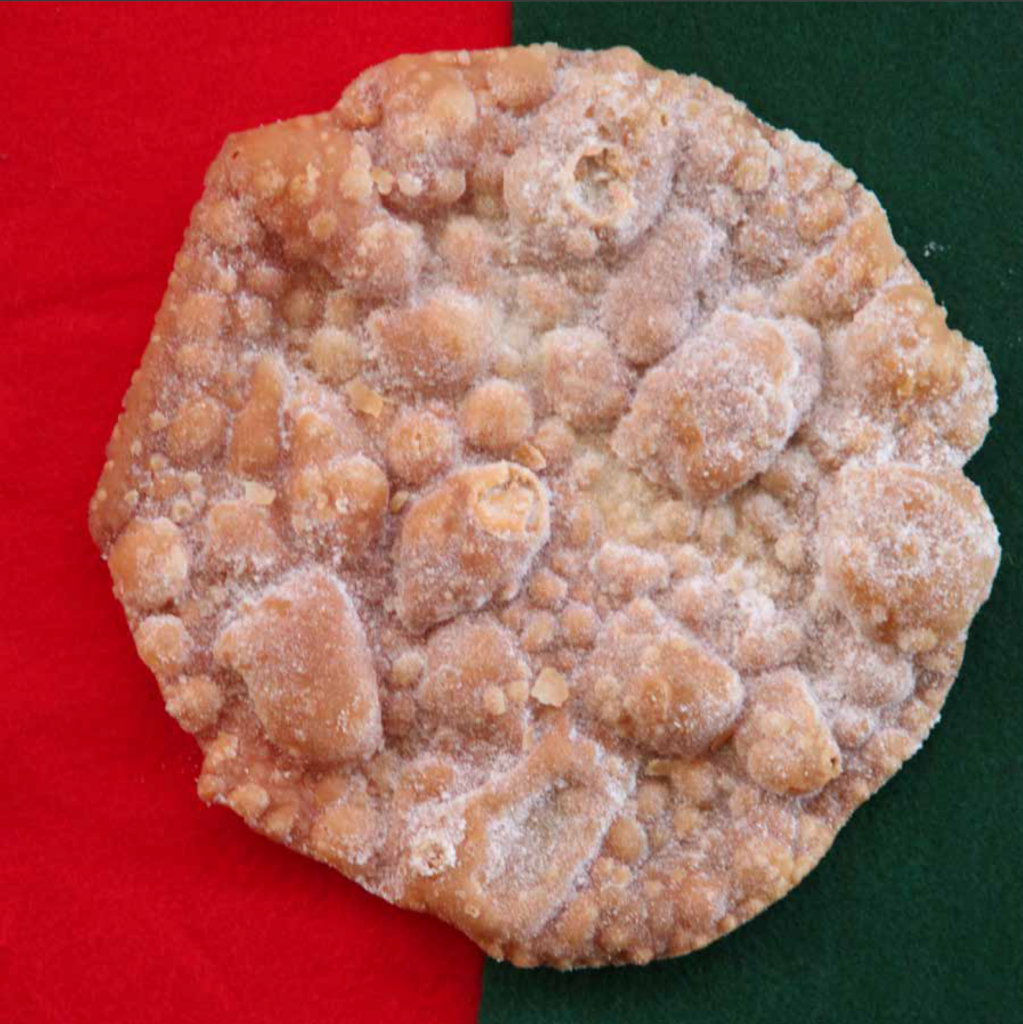
5 Fun Facts about National Donut Day (+ Our Favorite Recipe!)
Everybody loves a good donut; that’s why we gave them a holiday! Celebrate these delicious treats with five fun facts you should know about National Donut Day, and a recipe from one of our favorite dessert cookbooks, ¡Viva Desserts!
Fried donuts, baked donuts, healthy donuts, potato donuts, churro donuts, mochi donuts—there’s a donut for everyone! Every day, people are coming up with more delicious ways to make these sweet treats, and we love all of them. So of course we had to give them a holiday.
National Donut Day falls on the first Friday of June every year, and we celebrate it by eating as many of these fried treats as we can. (Yes, really!) This year, as we stuff our faces, let’s learn a bit more about this fat-fried holiday that we all love.
Here are five glazed, sprinkled, and sugared facts that are hot off the rack!
1. The Hole History
National Donut Day has its origins in a significant event during World War I. The Salvation Army’s “Donut Lassies” would provide soldiers with free donuts and coffee to boost morale on the front lines. As donuts were easy to make in dire circumstances, they were the perfect choice to bring the comforts of home to the front lines. The Donut Lassies would even occasionally fry up the donuts with war helmets! The holiday was established to honor their service.
2. A Donut Army for the Salvation Army
National Donut Day is also an opportunity to recognize and support the charitable work of the Salvation Army. The organization continues to assist those in need, and the holiday serves as a reminder of their efforts. Some donut shops even give out donuts for free on this holiday, so keep your eyes peeled.
3. The Donut and the Doughnut
The terms donut and doughnut are both widely used and refer to the same delightful treat. Doughnut came first, but during the mid-20th century, people wanted words to be spelled how they sounded. It was more simple! Although Dunkin’ Donuts probably had a hand in this change, doughnut became donut simply because people liked it better (even Merriam-Webster).
4. More Donut Goodness for the Calendar
While National Donut Day is celebrated on the first Friday of June in the United States, there are other donut-related holidays throughout the year. For example, International Jelly-Filled Donut Day falls on June 8, and National Cream-Filled Donut Day is celebrated on September 14. What other donut holidays do you want to celebrate?
5. Global Donuts
Donuts have a universal appeal, and different countries have their own unique variations. In the Netherlands, the traditional treat is known as oliebollen, which literally means “oil balls.” In Poland, pączki are similar to filled donuts. And the Philippines have the ube donut, a donut made from purple yam. Exploring these global donut traditions can be a tasty and educational adventure!
And don’t be afraid to experiment with your own donut adventures—ice cream donut sandwiches, donut cakes, donuts and chicken (hey, no judgment—we appreciate all food here). The donut world is yours for the taking, and there are so many great recipes you can make at home. So get your taste buds ready for National Donut Day! Or really, any day. Because who wants to wait all year to eat a delicious donut?
Our Favorite Donut Recipe
Buñuelos (Fritters)
Made with ingredients already in your cabinet, buñuelos are the perfect treat for National Donut Day. You can find these tasty Mexican donuts on page 146 of ¡Viva Desserts!
These fried fritters are prepared year-round, but they accentuate the holiday season and are especially tasty served with a cup of chocolate caliente! The trick to these buñuelos is to roll them as paper-thin as possible and let them dry out slightly before frying.
Prep Time: 30 minutes | Rest Time: 30 minutes | Cook Time: 30 minutes | Yield: 12 buñuelos

Ingredients
- vegetable oil for frying
Dough
- 3/4 cup water
- 1 Mexican cinnamon stick
- 2 cups plus 2 tablespoons flour
- 1 1/2 tablespoons sugar
- 1 1/2 teaspoons baking powder
- 1/2 teaspoon salt
- 3 tablespoons vegetable oil
- 1/2 teaspoon orange extract
Cinnamon Sugar
- 1/2 cup sugar
- 1 tablespoon ground cinnamon
Instructions
Dough
- To prepare cinnamon tea, in a saucepan bring water and cinnamon sticks to a boil, then remove from heat and steep for 10 minutes. Remove cinnamon stick.
- In a stand mixer fitted with the dough attachment, add flour, sugar, baking powder, and salt. Mix to combine.
- Add warm cinnamon tea, vegetable oil, and orange extract. Mix for a few minutes until dough has formed a ball and is no longer sticky. If dough is still sticky, add flour a tablespoon at a time until dough is no longer sticky.
- Remove dough from mixer and place on a floured work surface. Knead with hands for 2 to 3 minutes, adding flour until dough is no longer sticky and is very soft.
- Cover dough with a small bowl and allow to rest for 30 minutes.
- Cut dough into 12 equal pieces. Roll each piece into a ball. Cover with a towel and allow to rest for a few minutes.
- Dip balls of dough in some flour, then roll out with rolling pin until dough is paper-thin. Set to the side.
Frying
- Mix sugar and cinnamon on a plate. Line another plate with paper towels. Set to the side.
- In a heavy-bottomed pot with a candy thermometer attached to the side, add 2 inches oil and heat to 350 degrees. Place dough in oil and cook until dough is golden crisp, about 1 minute on each side.
- Drain each buñuelo on prepared plate. Dip in cinnamon sugar and serve.
For more donut goodness, check out these recipes from Spruce Eats.
See all kinds of donuts in our picture book Donuts: The Hole Story, a world filled with (and made of) everyone’s favorite fat-fried friends. And now you can see this scrumptious book in video format with Vooks!
More Desserts You Will Love
- ¡Viva Desserts!
- The Snow Princess Cookbook
- Skinny Southern Baking
- Bad Day Ice Cream
- Aguas Frescas & Paletas
Shaelyn Topolovec earned a BA in editing and publishing from BYU, worked on several online publications, and joined the Familius family. Shae is currently an editor and copywriter who lives in California’s Central Valley.
